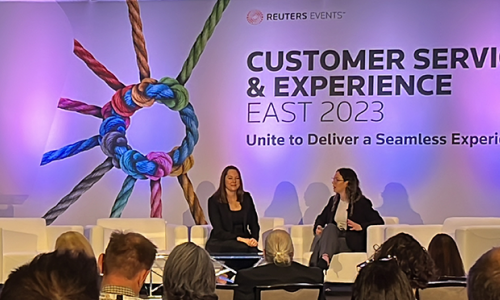How much is customer centricity embedded into corporate culture? Are companies more customer-centric than they used to be? Beyond talking points and lip service, what is the true state of customer centricity in business today?
“What is Your Customer-Centric DNA?” is a longitudinal study conducted to understand the state of customer centricity across North America. For the 2016 North American Benchmarking Study on Customer Centricity, Peppers & Rogers Group and Janet LeBlanc + Associates surveyed 209 senior leaders across industries to gauge progress across five pillars of customer centricity. Results were then compared to similar surveys conducted in 2012 and 2014.
“The market is maturing,” says Janet LeBlanc, president of Janet LeBlanc + Associates. “There is more evidence of support from senior leaders that customer experience is a way to help businesses transform and grow. The topic has moved out of select business units and now sits squarely in the boardroom.”
Survey responses were mapped along Janet LeBlanc + Associates’ Customer-Centric Index®, a composite of three barometer measures used to map an organization’s degree of maturity across four phases of a journey toward true customer centricity.
Little has changed since 2012 in how respondents perceive the quality of their customer experience compared to others. However, overall customer-centric culture and especially commitment to customer relationships have improved.
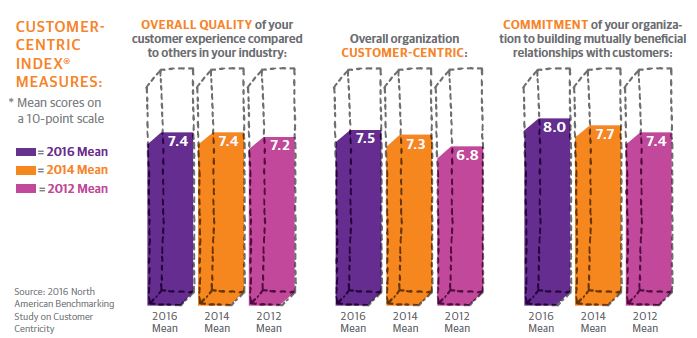
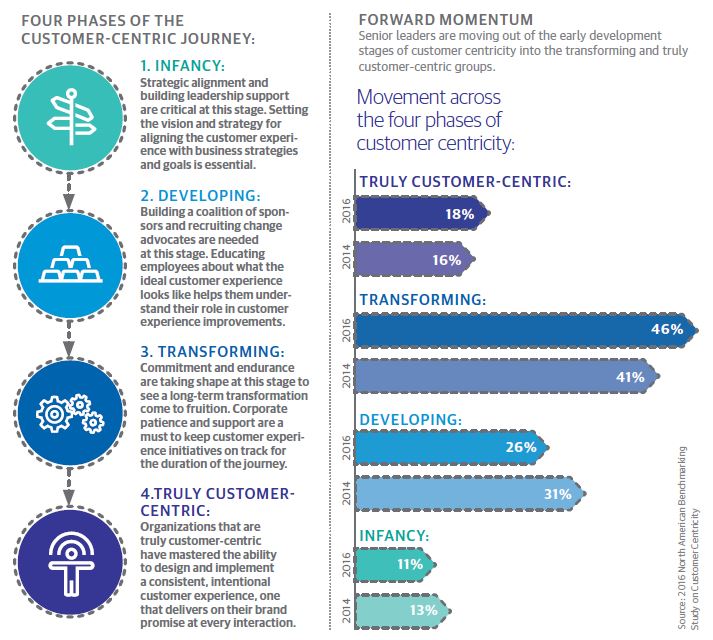
Pillars of customer centricity
“Customer centricity is often difficult for people to understand in concrete terms,” LeBlanc says. “As part of the research, we identified five areas of focus that are considered to be the building blocks of an organization’s customer-centric DNA.”
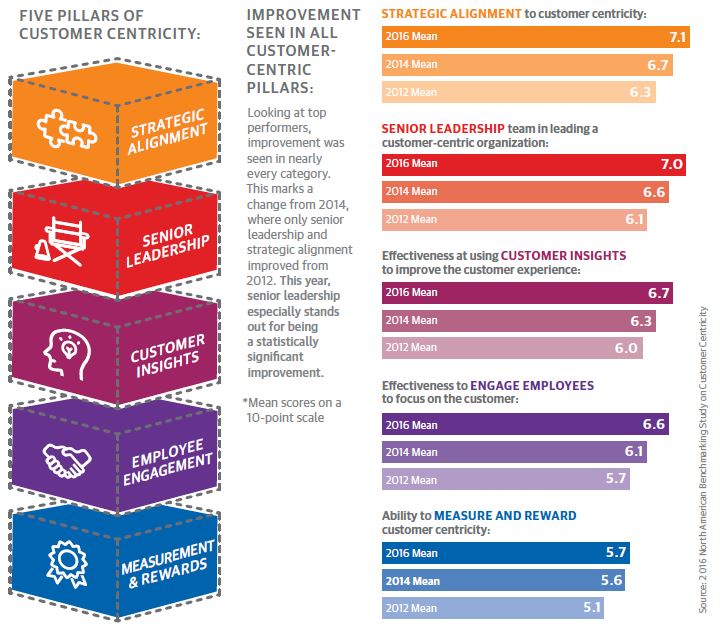
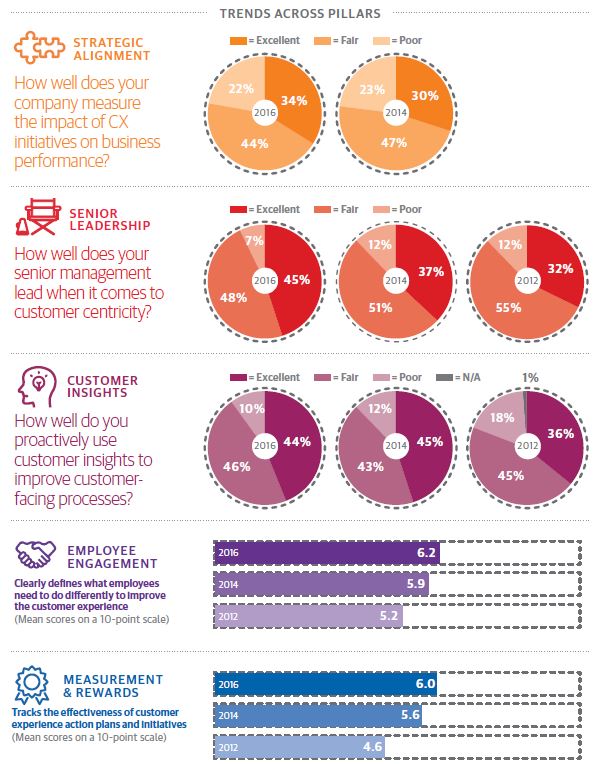
Drivers of customer centricity
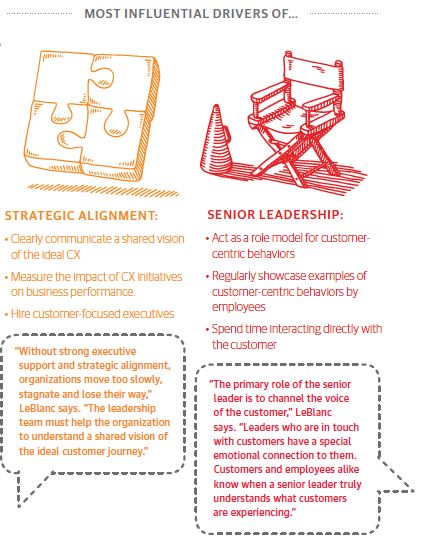

With mean scores in the 6 and 7 range out of 10 even among top performers, there is still plenty of room for improvement across all five pillars of customer centricity. Even those who are confident in being a truly customer-centric organization need to pay more attention to measuring the impact of CX initiatives on business performance and use that information to reward and recognize employees to drive transformational change.
It’s the gaping hole in the DNA helix that has seen little progress since 2012. Those who use performance management to track customer experience improvements will be the real differentiators as the business world evolves the building blocks of customer centricity.
“Companies that have CX in their DNA are constantly looking to their employees and customers for new ways to create value,” says Tim Keefe, principal at Peppers & Rogers Group. “As we work with clients around the world it is clear that the speed of change for customers is accelerating while large organizations are still bound in long-range analysis and decision making. Companies will need to rapidly start to implement customer experience programs that are dynamic, measured, and evolving if they hope to keep up.” ?





